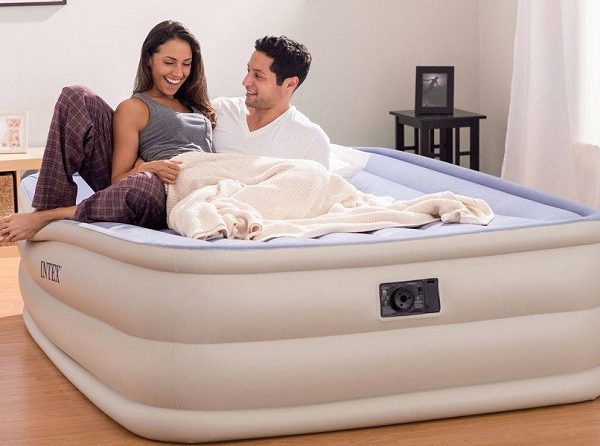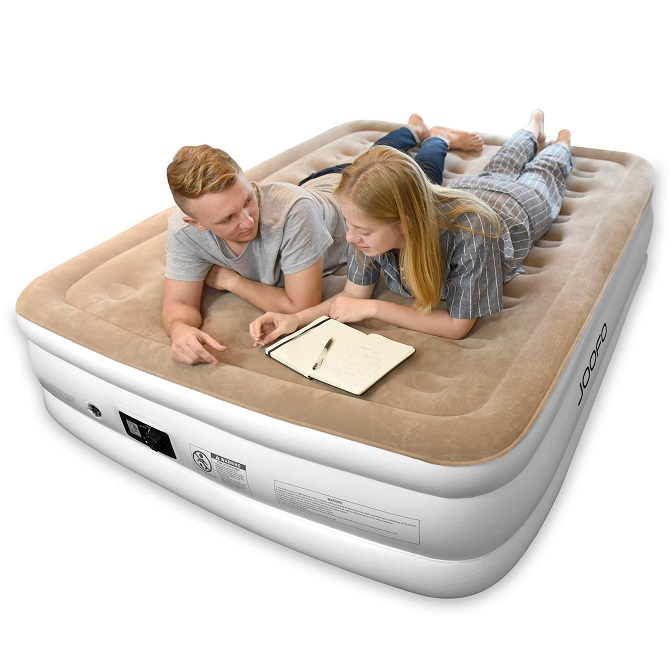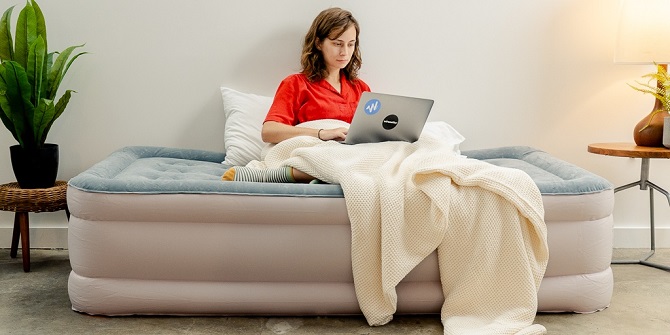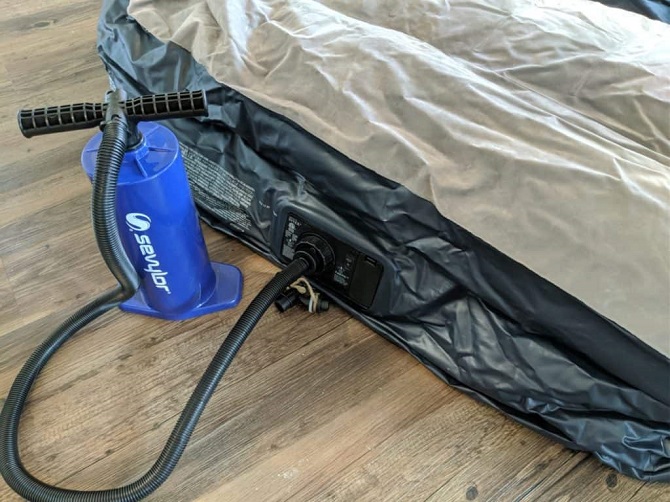08
Jun

An air mattress is an important piece of camping gear designed to provide users with maximum comfort in the great outdoors. It is also the ideal solution when it comes to accommodating overnight guests. Most air mattress bottoms are made of thick and durable material that can withstand the harsh outdoor conditions of the ground outside and inside the tent. The top, however, is usually made of a softer flocked material that’s very comfy and ideal to sleep on, thus avoiding the need for bringing and using sheets on camping trips.
Instead of a coil system, air beds use air. This allows you to adjust the mattress to a firm or a soft setting. Some air beds feature a dual-zone technology where both users can adjust their firmness setting. Higher-end air beds allow full customization of the bed’s zones. This feature is perfect for sleepers with weak necks or bad backs. With these mattresses, sleepers rest comfortably knowing that each part of their body is properly supported.
If you’re wondering what is a good air mattress made of, you should know that regardless of whether you are looking to buy a camping bed or a spare bed, there are certain things to keep in mind.

Source: Pinterest
The size of the bed should suit the needs of the user. If you are planning on using your air mattress as a spare bed for guests, I suggest you choose the largest model possible. Double air mattresses are always more comfortable, even when used by a single person. Just make sure you have enough space in your home to accommodate the air bed. For camping use, choose the right size for you and anyone you may share the bed with. Make sure your tent can accommodate the mattress you are considering to buy.
The thickness of the mattress will impact your sleeping comfort. As a rule of thumb, the greater the distance between you and the ground, the less cold you’ll feel. Plus, you won’t have to feel as much the bumps and rocks of uneven surfaces. The thickness of the mattress will also play a role in how easy the bed is to use. Thicker air beds are higher and this makes them easier to get in and out of. For indoor use as a spare bed, a thickness of 38-56 cm is usually ideal. For camping, you can choose a thinner mattress of 16-35 cm. Although there are thinner air beds available, these offer less comfort.

Source: Nytimes
The air bed can be made from a soft plastic but the bottom must be hard-wearing, especially for outdoor use. Air beds made from vinyl or PVC are good options to consider. The mattress’ air chambers can be arranged in vertical or horizontal beams, or form a coil beam construction. The upper surface material will determine how soft the bed is. Velour, suedette or laminated cotton sleeping surfaces are particularly popular. For improved comfort, look for an air mattress with flocking.
Some air mattresses have certain fun features that aren’t absolutely necessary but are definitely cool to have if your budget allows it. For example, some models have LED lights at the bottom of the mattress, so if you need to use the bathroom during the night, it can serve as a built-in nightlight. Others have sensors that look for drops in pressure during the night and automatically pump more air into the mattress if it gets too low, so there is no change in the mattress’ firmness while you are sleeping.
The weight limitation of an air mattress will be decided by its size, construction and the quality of the surface material. For example, a twin-sized bed typically supports 90 kilos while a larger queen-sized model can accommodate from 135 to 180 kilos, equivalent to two adults. Most air beds are designed and manufactured to accommodate a certain weight, often with a maximum of 115 kilograms. This is adequate for holding a person, along with other sleeping equipment such as sleeping bags, blankets, pillows, etc. Models able to hold up to 150 or 200 kilograms are the perfect solutions for 2 or 3 sleepers at once or for overweight individuals. The heavier the sleeper, the more stress the mattress will suffer. If the weight limit is exceeded, this could cause the mattress to dip or fail, reducing its lifespan.

Source: Carcampingtips
Air beds can be inflated either with a built-in pump or with an external pump. Models with external pumps can be inflated using a hand or foot air pump or an electric air pump, which inflates the bed in a few minutes. Although electric pumps are more expansive and more convenient, you need to have a power supply nearby.
Air beds with integrated inflation mechanisms are more convenient as with them you don’t have to carry an air pump with you, making them ideal for camping. Built-in pumps are either electric or operated by foot by exerting pressure at a specific point on the mattress. Built-in pumps operated by foot are good options for camping in places without electricity. Another benefit of these mechanisms is that they usually have a reverse system that allows you to both inflate and deflate the unit quickly.